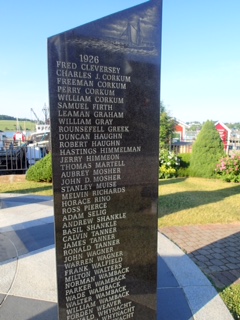Lunenburg

VulcanSpirit
Richard & Alison Brunstrom
Wed 13 Jul 2016 23:56
The town is a UNESCO World Heritage site, one of only two in the whole of North America. The centre was laid out by the Royal Engineers in 1753 and then deliberately populated by Protestant (rather than Catholic) settlers from Germany, Switzerland and France attracted by promises of farmland. It was called Lunenburg in honour of the then British King George II who was a Hanoverian and carried amongst his titles that of Duke of Lünenburg. The British were keen to counter the influence of the Acadians - earlier Catholic French settlers who had been in Nova Scotia for a hundred years by then. In fact the Acadians were forcibly deported a few years later for refusing to swear loyalty to the British Crown.
Farming proved to be nearly impossible in the stony ground so the settlers turned to fishing and lumber - and very quickly prospered mightily. The cod banks lie just offshore, and the huge virgin forests offered seemingly inexhaustible supplies of both superb oaks and softwoods. Here is a typical town house of the nineteenth century showing that prosperity, and a very attractive attention to detail typical of the vernacular architecture of the time:
Below is the Academy, regarded as the best example remaining in Canada of these purpose built excellent local schools - still in use today as a primary school as well as a museum:
Houses are typically immaculately presented. Here is a refresher in progress:
The second oldest CoE church in North America, dating from the 1750s but much rebuilt following a disastrous fire in 2001:
On the wharf is a wonderful memorial to those lost at sea:
Recent years carry few names due to the decline in fishing and improvements in safety technology, but look at this pillar from 1926:
1926 carries on to another pillar, and if you look at the bottom of this one I imagine that the Wamback and Whynacht families were just about wiped out that year. As moving as any war memorial - and the town toast heavily in both World Wars too.
Sailing continues to be an active part of town life. Here are a couple of beautiful local wooden boats full of local young people out for a Wednesday evening sail:
This one has a crew of eleven!
Sent from my iPad








